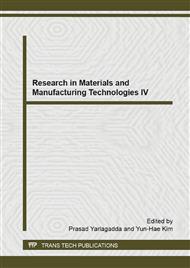p.1104
p.1108
p.1118
p.1124
p.1129
p.1135
p.1140
p.1144
p.1148
Contrastive Analysis on Parameter Identification of Unmanned Gliding-Hydrofoil Craft’s Maneuverability Based on GA and PSO
Abstract:
In this paper, the mathematical model of unmanned gliding-hydrofoil craft’s maneuverability is established by parameter identification theory. The objective function is established based on the data obtained in the experiment in towing tank. Two kinds of identification programs that genetic algorithm(GA) and particle swarm optimization(PSO) are written based on MATLAB. Each parameter of the objective function is identified based on the two programs respectively. The feasibility of the mathematical model is manifested by comparing the results of identification with experimental data. A full analysis and comparison is performed at the optimize efficiencies of the two programs.
Info:
Periodical:
Pages:
1129-1134
Citation:
Online since:
December 2014
Authors:
Price:
Сopyright:
© 2015 Trans Tech Publications Ltd. All Rights Reserved
Share:
Citation:


